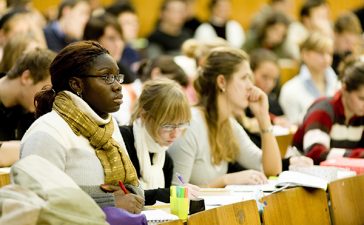Study in Australia
The coronavirus crisis and the resulting government clampdown on foreigners entering Australia have cut earning capacity and created a revenue crisis for universities that has already left the top eight institutions dangerously exposed and is set to deepen, a new report has found. It predicts a drop of up to 50% in international student enrolment by mid-2021.
For the nation’s most prestigious universities the crisis is of their own making, the report says, due to a too-heavy reliance for revenue on the fees paid by overseas students, notably those from China.
In their report*, Dr Bob Birrell and Dr Katharine Betts, respectively president and vice president of the Australian Population Research Institute, say the crisis will deepen because normally about half of the foreign students taking up higher education student visas do so in the second half of the calendar year, but it is likely few will do so this year and that the numbers are also likely to drop in the first half of 2021, with the result that the number of overseas students enrolled in higher education could fall by up to 50%.
Biggest hit
The universities most likely to take the biggest hit will be the leading institutions in the Group of Eight (Go8) research universities.
“These universities will lose substantial fee revenue from their normal sales of accommodation, parking and other services (including remedial English training) to overseas students,” Birrell and Betts conclude.
They calculate the losses could be as much as AU$400 million (US$269 million) compared to the budget expectations for the largest Go8 universities.
“The Chinese are buying qualifications from high research prestige universities,” Birrell and Betts say in their analysis.
“The Go8 have also invested heavily in the renewal of their campuses, featuring expensive buildings, landscaping and new research centres. But [they] will not escape revenue damage even in the first half of 2020 because most of those not here were Chinese students.”
In other Australian universities the share of commencing students from overseas was lower on average, at only 28% in 2018. And, in the case of these universities, most overseas students came from the Indian subcontinent, especially India and Nepal.
Massive revenue boost
“The Go8’s enrolment of overseas students has given a massive boost to these universities’ revenue. They have been able to charge AU$40,000 plus a year for their undergraduate and for postgraduate masters courses. Other universities charge around AU$25,000 a year for the same courses,” Birrell and Betts say.
Overall, total Australian university fee revenues from overseas students more than doubled from 2012 to 2018: increasing from AU$4.1 billion in 2012 to AU$8.9 billion in 2018.
By 2018, this income amounted to 26% of total university earnings, an increase of 117%.
In contrast, the number of domestic student enrolments by field of study has been controlled, as have student fees. And the prestigious universities could not charge higher fees for domestic students than other universities.
“These arrangements were like a straight-jacket, especially for elite universities. They wanted to escape these constraints. They have been able to do so by increasing their enrolment of overseas students,” Birrell and Betts write.
“The [federal government] left it to the universities to decide how many of these students to enrol and the fees they charged. The only stipulation imposed by government has been that such enrolments were not to be at the expense of domestic enrolments.”
Federal bans
New regulations imposed by the federal government, however, mean that since 20 March, foreign students cannot come or return to Australia, so thousands are likely to defer or delay their studies.
Almost 68,000 of the 177,400 Chinese citizens holding student visas were not in Australia at the end of March and from that date they could not return, resulting in a significant loss to the universities expecting them to enrol.
In 2018-19, the Australian government issued a little more than 142,000 higher education visas off-shore but only a fraction of this number are likely to be issued in 2020-21.
This, plus attrition from students completing courses, means that the number of overseas students enrolled in higher education Australia could fall by up to half by mid-2021.
“This will cut the fee revenue that Australian universities, especially the Go8, had budgeted for,” Birrell and Betts say.
“The seriousness of the revenue crisis, not just for the Go8, but for all universities relying on overseas student revenue will deepen over the year 2020-21.”
Go8 hardest hit
“The Go8 universities will take the biggest hit,” they write.
“In addition, these universities will lose substantial fee revenue from their normal sales of accommodation, parking and other services (including remedial English training) to overseas students.
“Losses of revenue of AU$300 million to AU$400 million over 2020-21, compared to budget expectations for the largest Go8 universities, are in store.”
Birrell and Betts say that not much can be done about the loss of export revenue generated from student fees, “at least for the next year or so although the government could contribute to the universities’ educational and research expenses”.
“However, if this is to occur the universities should be required to deliver educational and research activity relevant to Australian domestic students and to Australian industry needs,” they argue.
“We need to remember that it was the universities, and especially the Go8, that chose to put all their financial eggs in the overseas student revenue basket.
“When they had the opportunity to do so, they also chose to ignore any responsibility to train extra domestic students and to forgo any focus on research targeted at applied issues in Australia.”
Birrell and Betts argue that if Australian universities are compensated, it should be in return for major reforms: They should devote far more of their teaching activity to the needs of domestic students and refocus their research towards Australian industry, and Australia’s social and environmental needs.


.jpg)




